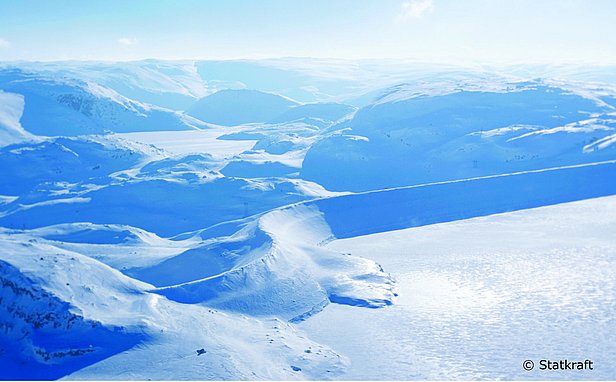SnowInflow: Optimized inflow forecasts for the snowmelt period
2024 - 2028
Norwegian hydropower plays a crucial role in the Nordic energy system, balancing variable renewable energy production in Northern Europe. Snowmelt contributes approximately to half of the inflow to Norwegian hydropower plants. However, optimally managing the reservoirs during the critical snowmelt period remains highly challenging due to substantial errors in snow amount estimates and predicted inflows.
The main objective of SnowInflow is to reduce errors in inflow forecasts during the snowmelt period. To achieve this goal, we will capitalize on advancements in snow monitoring, modeling, and data assimilation techniques. Today, accurate remote sensing techniques, such as airborne laser scanning, exist for measuring snow depths over vast areas. Also, physics-based snow models have become useful operationally, and can in combination with data assimilation reduce errors in inflow forecasts.
The main research challenges of this project include (a) determining the optimal combination of ground and remote sensing observations for enhanced inflow forecasts, (b) developing physics-based snow models optimal for Nordic snow and climate conditions as well as for use in hydropower inflow forecasting tools, (c) creating automated data assimilation techniques for accurate incorporation of inflow and snow data, and (d) assessing the financial benefits of inflow forecast using different snow measurements, modeling, and data assimilation methods.
In the SnowInflow project, we aim to improve hydropower scheduling, resulting in numerous benefits, such as better utilization of existing installed hydropower infrastructure, reduced risk of flood damages and higher financial gains.
The main goal of the project is to contribute to the transition towards a low-emission society by improving the efficiency of the Norwegian hydropower system, that can balance wind and solar production, which is expected to dominate energy generation in West-Central Europe in the mid of this century. Additionally, the methods developed during the SnowInflow project will be tested for Swiss watersheds with similar snow monitoring data, and contribute to improve national flood forecasts and aid authorities in regulating lake levels during the snowmelt period.
The project is integrated into the snow-hydrological forecasting team at SLF. We collaborate with data assimilation experts from NORCE in Bergen, Norway, and hydrologists at the hydropower company Statkraft in Oslo, Norway.
